 Facebook
Facebook
 X
X
 Instagram
Instagram
 TikTok
TikTok
 Youtube
Youtube
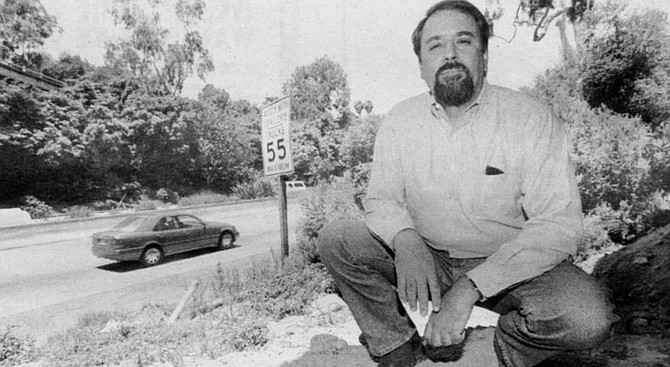
One of the Brazilian peppers, a 20-foot umbrella of lacy foliage, blocks an exit sign for Genesee Avenue. “Look at that sign. Kind of hard to see what it says, isn’t it? You’ve got to put yourself in the shoes of a tourist. You need to see that sign. That’s why I carry a set of loppers. I was on 94 about three months ago, and there were two ‘School Bus Stop Ahead’ signs totally blocked.”
By Ernie Grimm, Sept. 11, 1997 | Read full article
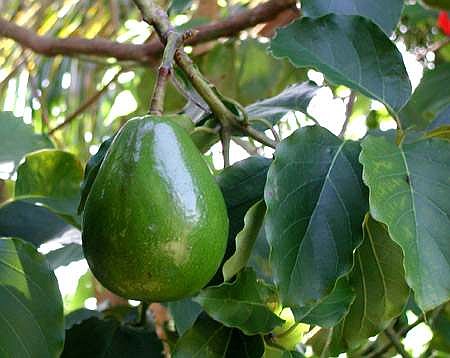
A few days passed, and Frank Salazar went back to the same grove and found Allan hooking more avocados out of trees. By this time, Salazar had been advised that if he saw a trespasser, he should hide and call the office. Salazar took down the license plate of a truck with a bed nearly full of avocados and called the number in to Kathryn Wolk, who owns Bejoca with her husband, Charley.
By Laura McNeal, Nov. 26, 1997 | Read full article
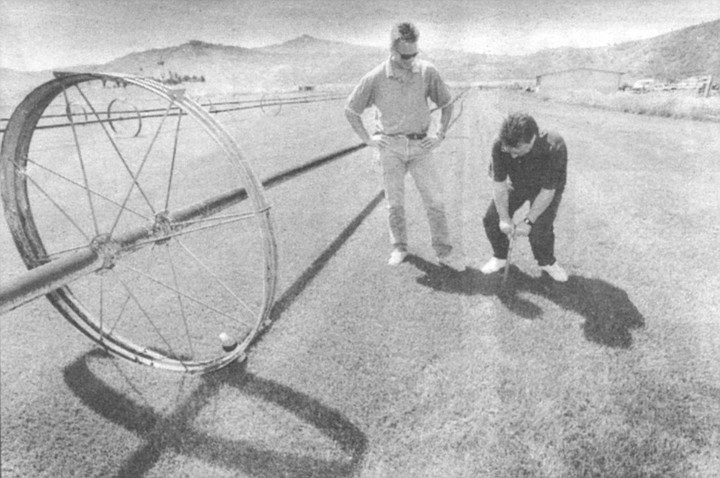
As the day advances the veil of mist lifts from the San Pasqual Valley, and this farm becomes a brighter green and even more beautiful. Irrigation sprinklers — long lines of wheels, or individual pulsating spinners — throw fountainlike patterns into the air and make the grass seem richer in hue. J.R. says that he irrigates “on demand,” that his water supply is from wells and therefore he’s free from paying agricultural rates.
By Douglass Whyknott, Oct. 8, 1998 | Read full article
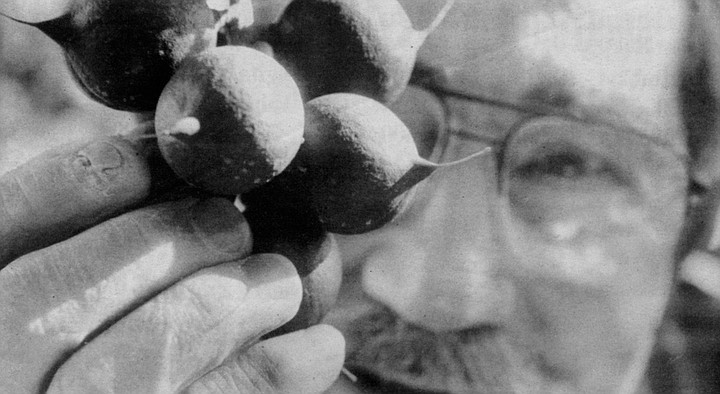
They emphasize a major difference between Hawaiian and San Diego County macadamias: “The industry standard for macadamias [in jars from Hawaii] is a nut that has been deep-fried in coconut oil, just like you make french fries, then they use gum arabic to glue the salt on. Those taste super to most people, but here in Southern California, with the large segment of the population that is health conscious, they want raw or unadulterated products.”
By Linda Nevin, Feb. 18, 1999 | Read full article
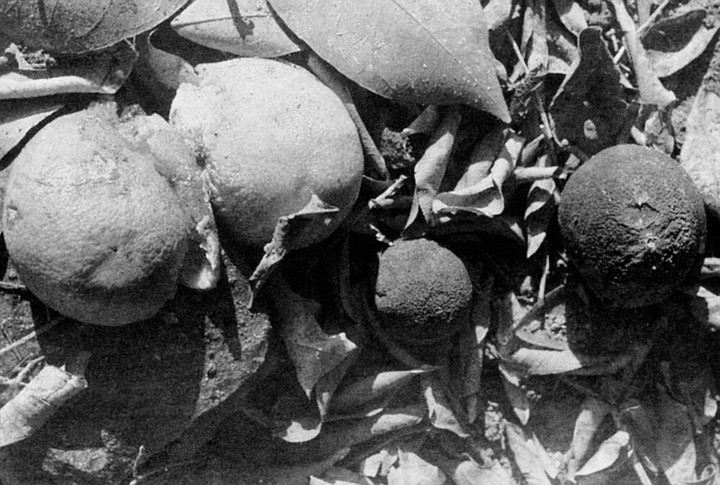
About 45 percent of the water in Fallbrook flows into groves, nurseries, and fields. In Rainbow 95 percent of the water is agricultural; in Valley Center, 85 percent. But when lumped with the rest of the county, these percentages have no significance at all. “The San Diego County Water Authority is an urban-water-user agency, and they don’t care if all the trees are gone. It’s like you’re political partners with a 600-pound gorilla.”
By Laura McNeal, Jan. 4, 1996 | Read full article
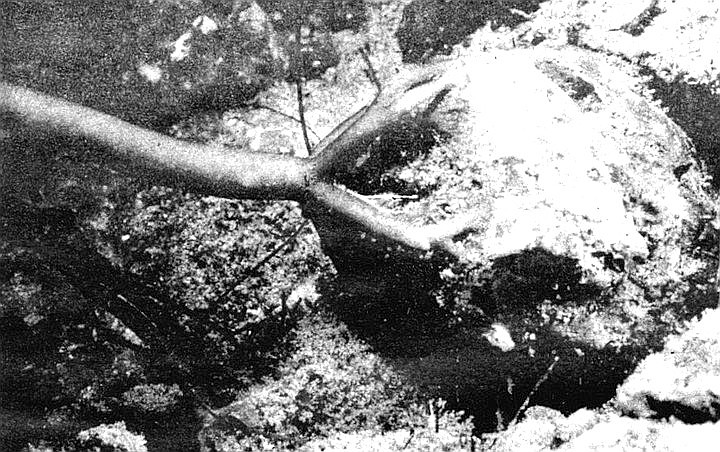
Environmentalists continue to voice their concern that the company is tampering with the fragile and delicate ecological relationship existing in the kelp beds. Abalone fishermen have complained that the quicklime used to kill the sea urchins has also decreased their yield of abalone. And surfers, who like the way the tall kelp smoothes their waves, curse at the kelp cutters who mow off the important top three or four feet of their ocean lawn.
By Manny Ramos, Nov. 9, 1978 | Read full article
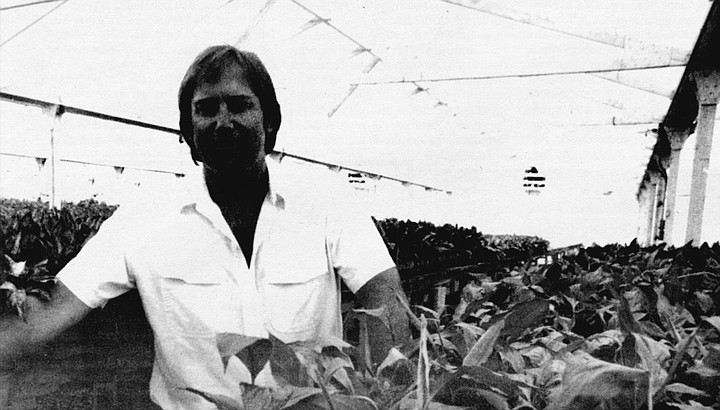
Many of the plants trucked in from Florida and Texas are considered to be of inferior quality when compared to California-grown plants. Even plants from Hawaii, though of high quality, often arrive here in poor condition because of the shock of travel. In recent years, thirteen nurseries in the Encinitas area have converted from growing their own plants to acclimatizing plants that were grown to specimen size in Florida, Texas, or Hawaii.
By Steve Sorensen, July 24, 1986 | Read full article

At some point, Mr. Ledgerwood came to accept the fact that his seed business would never tum out exactly the way he’d planned it nearly 60 years ago. But it didn't matter because he'd spent his life doing what he wanted to do. “Oh, I suppose we don’t earn half as much as most people do,” he says. “But then we don’t have to…. The seed business always does well during hard times," he points out.
By Steve Sorensen, Nov. 8, 1990 | Read full article

At 8:45 a.m., the pink roses are in the crowded upstairs workroom of Nanelle’s Flowers and Orchids in Rancho Bernardo. Stems are stripped of thorns and lower leaves, and the outer layer of guard petals are removed from the still barely opened buds. With newly trimmed stems, the roses are plunged into a bath of Floralife for an hour to freshen the blooms, then into a bucket of clean water and deposited in the cooler.
By Linda Nevin, Sept. 4, 1997 | Read full article


One of the Brazilian peppers, a 20-foot umbrella of lacy foliage, blocks an exit sign for Genesee Avenue. “Look at that sign. Kind of hard to see what it says, isn’t it? You’ve got to put yourself in the shoes of a tourist. You need to see that sign. That’s why I carry a set of loppers. I was on 94 about three months ago, and there were two ‘School Bus Stop Ahead’ signs totally blocked.”
By Ernie Grimm, Sept. 11, 1997 | Read full article

A few days passed, and Frank Salazar went back to the same grove and found Allan hooking more avocados out of trees. By this time, Salazar had been advised that if he saw a trespasser, he should hide and call the office. Salazar took down the license plate of a truck with a bed nearly full of avocados and called the number in to Kathryn Wolk, who owns Bejoca with her husband, Charley.
By Laura McNeal, Nov. 26, 1997 | Read full article

As the day advances the veil of mist lifts from the San Pasqual Valley, and this farm becomes a brighter green and even more beautiful. Irrigation sprinklers — long lines of wheels, or individual pulsating spinners — throw fountainlike patterns into the air and make the grass seem richer in hue. J.R. says that he irrigates “on demand,” that his water supply is from wells and therefore he’s free from paying agricultural rates.
By Douglass Whyknott, Oct. 8, 1998 | Read full article

They emphasize a major difference between Hawaiian and San Diego County macadamias: “The industry standard for macadamias [in jars from Hawaii] is a nut that has been deep-fried in coconut oil, just like you make french fries, then they use gum arabic to glue the salt on. Those taste super to most people, but here in Southern California, with the large segment of the population that is health conscious, they want raw or unadulterated products.”
By Linda Nevin, Feb. 18, 1999 | Read full article

About 45 percent of the water in Fallbrook flows into groves, nurseries, and fields. In Rainbow 95 percent of the water is agricultural; in Valley Center, 85 percent. But when lumped with the rest of the county, these percentages have no significance at all. “The San Diego County Water Authority is an urban-water-user agency, and they don’t care if all the trees are gone. It’s like you’re political partners with a 600-pound gorilla.”
By Laura McNeal, Jan. 4, 1996 | Read full article

Environmentalists continue to voice their concern that the company is tampering with the fragile and delicate ecological relationship existing in the kelp beds. Abalone fishermen have complained that the quicklime used to kill the sea urchins has also decreased their yield of abalone. And surfers, who like the way the tall kelp smoothes their waves, curse at the kelp cutters who mow off the important top three or four feet of their ocean lawn.
By Manny Ramos, Nov. 9, 1978 | Read full article

Many of the plants trucked in from Florida and Texas are considered to be of inferior quality when compared to California-grown plants. Even plants from Hawaii, though of high quality, often arrive here in poor condition because of the shock of travel. In recent years, thirteen nurseries in the Encinitas area have converted from growing their own plants to acclimatizing plants that were grown to specimen size in Florida, Texas, or Hawaii.
By Steve Sorensen, July 24, 1986 | Read full article

At some point, Mr. Ledgerwood came to accept the fact that his seed business would never tum out exactly the way he’d planned it nearly 60 years ago. But it didn't matter because he'd spent his life doing what he wanted to do. “Oh, I suppose we don’t earn half as much as most people do,” he says. “But then we don’t have to…. The seed business always does well during hard times," he points out.
By Steve Sorensen, Nov. 8, 1990 | Read full article

At 8:45 a.m., the pink roses are in the crowded upstairs workroom of Nanelle’s Flowers and Orchids in Rancho Bernardo. Stems are stripped of thorns and lower leaves, and the outer layer of guard petals are removed from the still barely opened buds. With newly trimmed stems, the roses are plunged into a bath of Floralife for an hour to freshen the blooms, then into a bucket of clean water and deposited in the cooler.
By Linda Nevin, Sept. 4, 1997 | Read full article
Comments